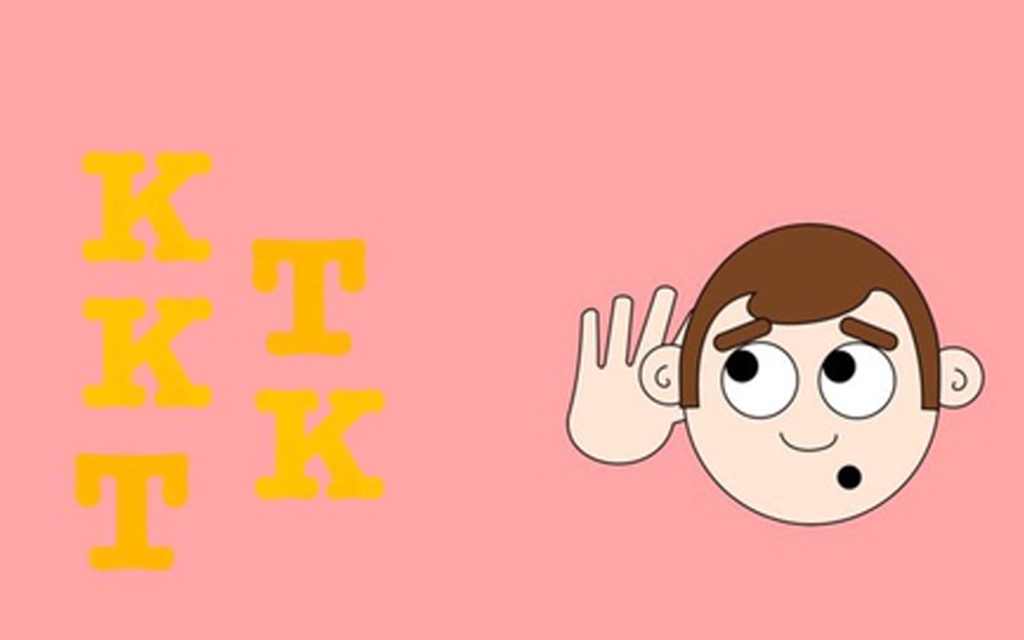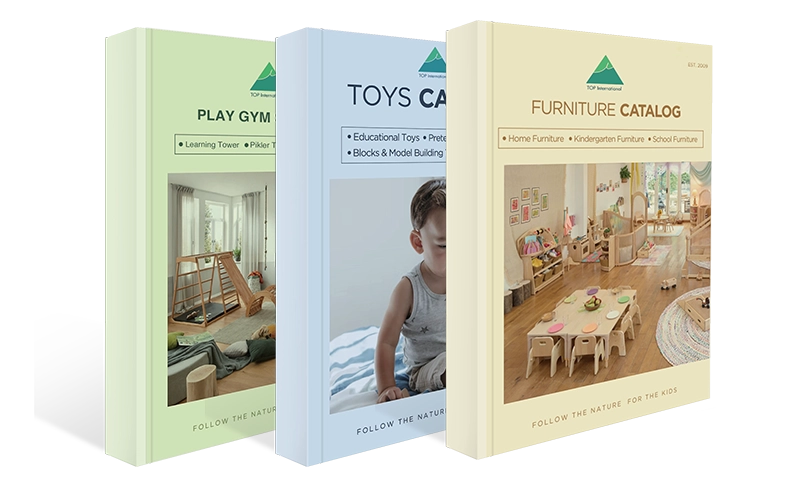Is your child struggling to tell the difference between similar sounds like “b” and “d” or “ch” and “sh”? Do they often misunderstand spoken instructions, even in quiet environments? Are you concerned that poor Auditory Discrimination may delay their reading or speaking abilities and hurt their classroom performance?
Auditory Discrimination is a foundational listening skill that allows children to recognize and differentiate between sounds in language. Enhancing this ability not only strengthens speech clarity but also improves reading comprehension, memory, and attention span. With strong auditory processing, children follow directions better, express themselves more clearly, and adapt more confidently in learning environments.
There are proven, practical ways to strengthen a child’s Auditory Discrimination—many of which can be done at home or in the classroom. Let’s explore them together.

ما هو التمييز السمعي؟
يشير التمييز السمعي إلى قدرة الدماغ على تمييز الأصوات المختلفة والتمييز بينها. ويشمل ذلك ملاحظة الفروق الدقيقة بين الفونيمات (أصغر وحدات الصوت في الكلام)، مثل التمييز بين صوتي "b" و"p" أو "f" و"v". على سبيل المثال، إذا لم يستطع الطفل التمييز بين كلمتي "cat" و"cap"، فقد يواجه صعوبة في التهجئة أو فهم المقروء أو التواصل اللفظي.
العلم وراء التمييز السمعي
من وجهة نظر عصبية، يشمل التمييز السمعي القشرة السمعية في الدماغ ومراكز اللغة. عندما يسمع الأطفال الأصوات، يتعين على أدمغتهم معالجة المعنى وتفسيره بسرعة. إذا كانت هذه العملية غير فعّالة أو غير مكتملة النمو، فقد يستمع الطفل إليها بشكل صحيح، لكنه يفشل في فهمها أو التفاعل معها بشكل مناسب. الأمر لا يتعلق بفقدان السمع، بل بقدرة الدماغ على تفسير ما يسمعه.
Auditory discrimination is part of the more prominent family of auditory processing skills, which also includes:
- الذاكرة السمعية - القدرة على تذكر ما تسمعه
- التمييز السمعي بين الشكل والأرضية - القدرة على التركيز على أصوات محددة في البيئات الصاخبة
- التسلسل السمعي - التعرف على ترتيب الأصوات أو الكلمات

علامات ضعف مهارات التمييز السمعي
قد يظهر على الأطفال الذين يعانون من ضعف مهارات التمييز السمعي ما يلي:
- صعوبة في اتباع التعليمات المكونة من عدة خطوات
- كلمات متشابهة في النطق مربكة
- تأخر تطور الكلام
- نطق الكلمات الشائعة بشكل خاطئ
- صعوبة في تعلم أصوات الحروف أو القراءة بصوت عالٍ
غالبًا ما تُسبب هذه التحديات الإحباط في المدرسة، وخاصةً خلال دروس القراءة والكتابة المبكرة. والخبر السار هو أن الدعم المناسب يُمكن أن يُحسّن هذه المهارات بشكل ملحوظ.
أهمية التمييز السمعي
يُعدّ التمييز السمعي أساسيًا لتطوير كلام واضح، وفهم قوي للغة، وأداء أكاديمي ناجح. فهو يُمكّن الأطفال من التمييز بين الأصوات المتشابهة، واتباع التعليمات، وأن يصبحوا قراءً ماهرين.
كيف يؤثر ذلك على اللغة والمحو الأمية
الوعي الصوتي - القدرة على سماع الأصوات في الكلمات والتحكم بها - يرتبط ارتباطًا مباشرًا بالتمييز السمعي. فبدونه، قد يواجه الطفل صعوبة في:
- تعلم القراءة صوتيًا
- فهم القوافي أو المقاطع
- تهجئة دقيقة
- اكتشاف الأخطاء في اللغة المنطوقة أو المكتوبة
قد يؤثر ضعف التمييز السمعي أيضًا على اكتساب المفردات. إذا لم يستطع الطفل التمييز بين كلمات مثل "سفينة" و"أغنام"، فقد يُسيء فهم ما يُدرّس أو يُنقل إليه.
التأثير الاجتماعي
إلى جانب الصعوبات الأكاديمية، قد يشعر الأطفال ذوو مهارات التمييز السمعي الضعيفة بالعزلة. وقد:
- تجنب المحادثات الجماعية
- سوء تفسير النكات أو السخرية
- أصبح محبطًا أو منسحبًا
- تطوير مشاكل سلوكية نتيجة للارتباك أو الإرهاق
ترتبط الصحة الاجتماعية والعاطفية ارتباطًا وثيقًا بالتواصل. وتعزيز التمييز السمعي لا يُفيد في الفصل الدراسي فحسب، بل يُعزز الصداقات والثقة بالنفس والتفاعلات العائلية.
فوائد تعزيز التمييز السمعي
تقوية الذاكرة ومهارات التركيز
تحسين طلاقة القراءة والفهم
إنتاج كلام أكثر وضوحًا
أداء أكاديمي أفضل
زيادة الثقة في المواقف الاجتماعية

Signs Your Child May Have Weak Auditory Discrimination
As a parent or kindergarten educator, it’s essential to recognize the early signs of weak auditory discrimination, especially during the critical language development years between ages 2 and 6. This auditory skill is what allows children to differentiate between sounds, syllables, and phonemes (the smallest units of sound in language). When this ability is underdeveloped, it can lead to a range of challenges, from speech delays to learning difficulties in reading and comprehension.
One of the most common signs is confusion between similar-sounding words or letters. For example, a child may mix up “bat” and “pat” or hear “cat” when someone says “cap.” These errors aren’t just cute mispronunciations—they are indicators that the child’s brain is not processing auditory information.
Another red flag is difficulty following verbal instructions, especially in group environments like the classroom. If a child frequently asks for repetition or seems to misunderstand tasks that were clearly explained, this could signal a processing gap. It’s not about intelligence—it’s about how their brain decodes what they hear.
You may also notice delayed speech development. Children with auditory discrimination issues often struggle to reproduce sounds correctly because they don’t hear the differences clearly in the first place. As a result, they may avoid speaking or develop unusual speech patterns that persist longer than expected.
Other behavioral signs include frequent daydreaming, inattentiveness during storytime, or poor participation in phonics activities. These kids may seem distracted, but the root issue may be auditory, not visual or behavioral.
If you recognize several of these signs in your child or student, it’s worth taking proactive steps. Weak auditory discrimination is a developmental delay, not a permanent disability, and with targeted support, many children can catch up quickly.
Key Benefits of Strengthening Auditory Discrimination
Strengthening a child’s auditory discrimination is one of the most impactful steps we can take to support their early learning and long-term academic success. While it may seem like a small skill—simply telling sounds apart—it plays a foundational role in language, communication, and literacy.
One of the most direct benefits is clearer speech development. When children can accurately hear differences between sounds like /b/ and /d/ or /ch/ and /sh/, they can replicate those sounds more confidently when speaking. This leads to better pronunciation, fewer speech errors, and greater self-assurance when expressing oneself.
Another critical benefit is reading readiness. Auditory discrimination is the gateway to phonemic awareness—the ability to recognize and manipulate the sounds that make up words. Without strong sound differentiation, children may struggle with phonics, which affects their ability to decode and understand words while reading. In other words, the path to strong reading starts with strong listening.
Improved listening and comprehension are also significant benefits. Children with refined auditory discrimination are more capable of following multi-step instructions, understanding classroom discussions, and processing new vocabulary. This makes them more confident participants in group settings and less reliant on repeated explanations.
There are even social-emotional benefits. A child who understands spoken language is less likely to feel frustrated or left out. They can engage more effectively in conversations, pick up on tone and emotion, and develop stronger peer relationships. Better communication reduces anxiety and builds confidence in both academic and social environments.
From a long-term perspective, auditory discrimination is also linked to better memory, attention, and problem-solving. These cognitive skills all rely on the brain’s ability to organize, store, and retrieve verbal information efficiently. Strengthening auditory skills lays a neurological foundation that supports all future learning.
In short, investing in a child’s auditory discrimination is like giving them the tools to unlock language, learning, and confidence. Whether at home or in the classroom, it’s a skill worth nurturing every single day.

Proven Strategies to Enhance Auditory Discrimination at Home
When it comes to nurturing a child’s auditory discrimination abilities, the home environment plays a decisive role. As a parent or caregiver, you don’t need advanced degrees in early childhood education to make a meaningful difference—you need consistency, intention, and the correct set of activities that stimulate sound awareness. In this section, we’ll explore the most effective home-based strategies to develop and strengthen auditory skills, combining educational insights with Montessori and Reggio-inspired methods.
Games and Activities for Daily Practice
Children learn best through play, especially when the activities are embedded into daily routines. One of the most accessible and impactful ways to sharpen auditory discrimination is through:
Listening games
These can be as simple as “Sound Hunt,” where the child closes their eyes and guesses familiar household sounds (a closing drawer, a spoon tapping a cup, footsteps), to more structured exercises like “I Hear With My Little Ear.”
Rhyming games
They are especially effective, as they help children pick up on the subtle differences and similarities in sound endings. You can ask questions like “What rhymes with ‘cat’?” and then explore all the possibilities. The point here is not perfection but repetition—repeating sound patterns helps the brain organize and distinguish them more accurately.
Clapping syllables
Another fun way to build auditory awareness. Choose simple words and have the child clap out each syllable (“apple” = two claps, “banana” = three). This not only improves auditory segmentation but also prepares them for decoding words in reading.
Daily conversations also offer opportunities. Ask your child to repeat sentences you say, or play “telephone” to see how well they’re catching sound details. These games may feel like play, but neurologically, they are training sessions for the brain.
أنشطة التمييز السمعي لمرحلة ما قبل المدرسة
Children between the ages of 3 and 5 are in a sensitive developmental window where their brains are especially receptive to auditory learning. The groundwork for language, listening, and phonemic processing is laid during this time. Failing to nurture auditory discrimination skills at this stage can result in long-term academic delays and speech issues. However, children can build the foundational skills necessary for successful reading and communication with early intervention and daily reinforcement.
Auditory discrimination is not just about hearing clearly—it’s about the brain’s ability to process, analyze, and interpret subtle sound differences. This includes differentiating between similar sounds like “p” and “b,” distinguishing one voice in a noisy classroom, or recognizing rhyming patterns in words. These tasks may sound simple to adults, but require complex cognitive coordination for young children.
يستفيد أطفال ما قبل المدرسة بشكل كبير من تعليم مهاراتهم السمعية من خلال اللعب، والتفاعل اللغوي، والموسيقى، ورواية القصص. غالبًا ما تفشل الدروس الرسمية في جذب انتباههم، لكن الأنشطة الخيالية متعددة الحواس يمكن أن تُحقق مكاسب هائلة. سنستكشف أدناه أهم عنصرين في هذا المجال التنموي: المهارات نفسها وكيفية تنميتها من خلال أنشطة هادفة.
مهارات التمييز السمعي
يُعد فهم مكونات المعالجة السمعية الخطوة الأولى نحو تعزيزها. وفيما يلي ثلاثة من أهم العناصر في إطار التمييز السمعي:
الوعي الصوتي
يشير الوعي الصوتي إلى القدرة على تمييز ومعالجة تراكيب اللغة الصوتية. وهو مصطلح شامل يشمل القافية، وتجزئة المقاطع، والتعرف على أنماط الكلمات. قد يواجه الأطفال في مرحلة ما قبل المدرسة الذين يفتقرون إلى الوعي الصوتي صعوبةً لاحقًا في فك رموز الكلمات، والتهجئة، وفهم المقروء.
هذه المهارة تسمح للأطفال بـ:
- Break down words into syllables (e.g., “elephant” has three syllables)
- حدد الكلمات التي تتناغم أو تبدأ بنفس الصوت
- دمج العديد من الأصوات لتشكيل الكلمات
تنمية الوعي الصوتي تعني مساعدة الأطفال على إدراك الأصوات - فهم كيفية نطق الكلمات، وكيفية بنائها، وكيفية التلاعب بهذه البنيات لخلق معانٍ جديدة. عند القيام بذلك من خلال التصفيق الإيقاعي، أو الغناء، أو ألعاب القافية المرحة، يُرسّخ هذا التعلّم السمعي العميق بطريقة طبيعية وممتعة.
الوعي الصوتي
الوعي الصوتي، وهو فرع من الوعي الصوتي، أكثر دقة، إذ يشير إلى القدرة على سماع الأصوات الفردية، أو الفونيمات، في الكلمات والتحكم بها. ولعل هذه المهارة هي الأهم في نجاح القراءة مستقبلًا. فالأطفال الذين يستطيعون عزل الفونيمات وتعديلها يكونون أكثر قدرة على أن يصبحوا قراءً وهجاءً واثقين.
يمكن للأطفال في سن ما قبل المدرسة الذين يتمتعون بوعي صوتي قوي أن:
- حدد الصوت الأول أو الأخير في الكلمة ("ما هو الصوت الذي تبدأ به كلمة 'sun'؟")
- دمج الأصوات المنفصلة لتكوين الكلمات ("/c/ /a/ /t/ يجعل... قطة!")
- قم بتبديل الأصوات لتكوين كلمات جديدة ("قم بتغيير /m/ في كلمة 'mat' إلى /s/ - ما هي الكلمة الجديدة؟")
لا يتطلب بناء هذه المهارة مفرداتٍ معقدة، بل يتطلب إنصاتًا مُركّزًا، وتعرضًا مُستمرًا للغة المنطوقة، ومهارةً في التلاعب بالأصوات.

إدراك الكلام في الضوضاء
This skill, also referred to as auditory figure-ground discrimination, is often overlooked but critical, especially in classrooms and group settings. It involves focusing on a single sound source or speaker amidst background noise. Preschoolers who struggle with this may appear distracted or inattentive in noisy environments.
إن تطوير إدراك الكلام وسط الضوضاء يؤهل الأطفال إلى:
- اتبع تعليمات المعلم على الرغم من حديث زملاء الفصل
- استمع إلى أحد الوالدين وهو يقرأ أثناء تشغيل التلفزيون
- التركيز على المحادثة أثناء الأحداث المزدحمة والصاخبة
يتطلب بناء هذه المهارة لدى العديد من الأطفال، وخاصةً أولئك الذين يعانون من صعوبات في الانتباه أو اضطرابات طفيفة في التمييز السمعي، التدريب في بيئات مُراقبة تُدخل فيها تدريجيًا متغيرات الضوضاء. ومع مرور الوقت، يُعزز هذا قدرتهم على التركيز على المُدخلات السمعية ذات الصلة.
بينما تُشكّل المهارات الأساس، فإن أفضل طريقة لتدريب أطفال ما قبل المدرسة على التمييز السمعي هي من خلال مهام تفاعلية وجذابة. تستهدف الأنشطة التالية مجالات محددة من الإدراك والتمييز السمعي، ويمكن تنفيذها بسهولة في المنزل أو في الفصول الدراسية.
ارتفاع السمع
اصطحب طفلك في مرحلة ما قبل المدرسة إلى الهواء الطلق في "نزهة سمعية" - نزهة بطيئة وهادئة تُركّز كليًا على الاستماع. اطلب منه أن يُشير إلى جميع الأصوات المختلفة التي يسمعها: زقزقة الطيور، نباح الكلاب، حفيف أوراق الشجر، مرور السيارات.
ولجعل الأمر أكثر جاذبية:
- استخدم قائمة مرجعية للبحث عن الأصوات قابلة للطباعة.
- قم بتسجيل الأصوات على الهاتف ثم قم بإعادة تشغيلها لاحقًا لألعاب المطابقة.
- استخدم أسئلة مثل، "هل كان هذا الصوت قريبًا أم بعيدًا؟ عاليًا أم خافتًا؟"
يعمل هذا النشاط على تعزيز الانتباه السمعي والتمييز بين الأصوات البيئية، وهو ما يعد مقدمة للاستماع المركز في الفصل الدراسي.
تحديد الأدوات
عرّض أطفالك لآلات موسيقية مختلفة، حقيقية كانت أم رقمية. اعزف على كل آلة واطلب من طفلك تسميتها. لاحقًا، شغّل صوتًا خلف ظهرك واطلب منه التعرف عليه.
تساعد هذه اللعبة أطفال ما قبل المدرسة على تعلم:
- الاختلافات اللونية
- تحديد مصدر الصوت
- الذاكرة السمعية من خلال التكرار
وهي أيضًا بوابة طبيعية لتدريب الإيقاع، والذي يرتبط ارتباطًا وثيقًا باكتساب اللغة وعلاج التمييز السمعي عند الأطفال الذين يعانون من مشكلات المعالجة.
أسماء الحيوانات
هذه اللعبة اللغوية المرحة تُشجّع على إدراك الأصوات وتصحيح الأصوات. انطق اسم حيوان بشكل خاطئ - عمدًا! على سبيل المثال، قل "log" بدلًا من "dog" واسأل: "مهلاً، هل قلتُ ذلك بشكل صحيح؟"
شجع الأطفال على:
- تصحيحك عن طريق عزل الصوت غير الصحيح
- كرر الكلمة الصحيحة
- إنشاء إصدارات سخيفة واكتشاف الأخطاء
This reinforces phonemic precision and critical listening, both essential for literacy.
بطاقات تعليمية متناغمة
استخدم بطاقات تعليمية مصورة تحتوي على أشياء متناغمة: قطة، قبعة، خفاش، فأر. قل كلمة بصوت عالٍ واطلب من طفلك اختيار بطاقة متناغمة من المجموعة.
زيادة الصعوبة عن طريق:
- إعطائهم قافية بدون إشارة بصرية
- طلب منهم إنشاء قوافيهم الخاصة
- صنع قوافي غير منطقية وتحديد أيها حقيقية
وهذا يدعم مهارات القراءة المبكرة، وأهداف التمييز السمعي، وتنمية الوعي الصوتي.

تخمين من
سجّل عبارةً ما لأفراد العائلة أو المعلمين، ثم شغّلها عشوائيًا. اطلب من طفلك تحديد المتحدث بناءً على صوته ونبرته ونبرته.
وهذا يعزز:
- التعرف على نمط الصوت
- الذاكرة السمعية والاستدلال
- الاستماع في البيئات الصاخبة
تعمل هذه اللعبة على بناء الثقة في الاستماع في العالم الواقعي، وهو أمر مفيد بشكل خاص للأطفال الذين يعانون من علاج النطق والتمييز السمعي.
الدمى الانتقائية
اصنع دمية مضحكة "لا تجيد الاستماع". تنطق الدمية الكلمات بشكل خاطئ باستمرار: "أحب هذا!" (أي "قطة").
مهمة طفلك هي:
- تصحيح الدمية
- كرر الكلمة الصحيحة
- التأكيد على الصوت المستهدف
تعمل هذه اللعبة على تعزيز مراقبة دقة الصوت وبناء الثقة في تصحيح الأخطاء السمعية.
ربط الأصوات
استخدم أزواجًا من الكلمات المتشابهة في النطق: "مروحة" مقابل "شاحنة"، "خروف" مقابل "سفينة". قلها بصوت عالٍ واسأل نفسك إن كانت متشابهة أم مختلفة.
تعزيز التحدي من خلال:
- زيادة تعقيد الكلمات
- خلط الكلمات غير المنطقية
- إضافة موسيقى خلفية كوسيلة تشتيت
هذا فوتمرين التمييز السمعي الأساسي يعد الأطفال لتدريب وتقييمات أكثر تقدمًا في مجال التمييز السمعي.
بناء مهارات ما قبل القراءة لدى الأطفال من خلال أنشطة التمييز السمعي
يبدأ أساس القراءة والكتابة قبل أن يمسك الطفل بالقلم أو يفتح الكتاب بوقت طويل. يبدأ الأمر بالاستماع، وتحديدًا بقدرة الدماغ على السمع والتعرف على الأصوات المختلفة والتمييز بينها - أي التمييز السمعي. فبدون مهارات تمييز سمعية قوية، يكون الأطفال أكثر عرضة لصعوبات في الصوتيات وفك الرموز والقراءة بطلاقة.
يُؤتي التركيز على التعلم السمعي ثماره الكبيرة في السنوات الأولى من حياة الطفل، حيث يكون أكثر تقبلاً للغة. تُعدّ هذه الفترة مثاليةً لبدء أنشطة التمييز السمعي، وهي أنشطة ممتعة وجذابة وفعّالة للغاية في تنمية مهارات ما قبل القراءة. تُركّز هذه الأنشطة على القدرات المعرفية الأساسية كالانتباه والذاكرة والتسلسل ومعالجة الأصوات، ممهّدةً الطريق للنجاح المستقبلي في القراءة واللغة.
لماذا يُعدّ التمييز السمعي مهمًا لمرحلة ما قبل القراءة؟
يجب على الأطفال أولاً أن يتعلموا تمييز الأصوات المختلفة قبل أن يتمكنوا من ربطها بأحرف أو كلمات. تؤثر هذه القدرة على كيفية:
- كشف القوافي والمقاطع
- التعرف على الأصوات الأولية والنهائية
- ربط أصوات الحروف بالرموز المكتوبة
- نطق الكلمات غير المألوفة أثناء القراءة
اعتبر التمييز السمعي مرحلة "تدريب الأذن" في محو الأمية. فكما يجب على الموسيقيين تحديد درجة الصوت ونبرته، يجب على القراء التمييز بين /s/ و/sh/ أو /b/ و/d/. قد تبدو هذه الاختلافات طفيفة للبالغين، لكنها جوهرية بالنسبة للمتعلمين الصغار.
تُعدّ مرحلة ما قبل المدرسة ورياض الأطفال بالغة الأهمية لمعالجة مشاكل التمييز السمعي، خاصةً إذا أظهر الطفل علامات تأخر أو صعوبة في اتباع التعليمات اللفظية. إذا لم تُعالج هذه المشاكل، فقد تتطور إلى اضطرابات في القراءة، وتأخر في الكلام، وصعوبات في الفصل الدراسي. ولذلك، يُعدّ تدريب التمييز السمعي غالبًا جزءًا أساسيًا من التدخل المبكر وعلاج النطق.

علامات ضعف مهارات التمييز السمعي في مرحلة الطفولة المبكرة
الأطفال الذين يحتاجون إلى دعم إضافي في هذا المجال قد:
- Mix up similar-sounding words (“coat” vs “goat”)
- Struggle to hear the differences in rhymes
- Seems inattentive during verbal instructions
- لديهم تأخر في الكلام أو مفردات محدودة
- الفشل في تقييمات التمييز السمعي أو اختبارات التمييز السمعي
Parents and educators should not confuse these behaviors with laziness or a lack of interest. Often, it’s a case of an underdeveloped auditory system. The solution lies in consistent, targeted activities that reinforce sound recognition in various forms—from environmental noises to spoken language cues.
تعزيز مهارات ما قبل القراءة والكتابة من خلال التعلم الصوتي القائم على اللعب
بخلاف الحفظ عن ظهر قلب أو تمارين القراءة الإجبارية، تُعدّ ألعاب الصوت بديهية وممتعة. فهي تندمج بشكل طبيعي في الحياة اليومية وتجعل التعلم أشبه باللعب. أنشطة مثل تمييز أصوات الحيوانات، والتصفيق بالمقاطع، وفرز بطاقات القوافي، تبني جسرًا بين السمع والفهم.
علاوة على ذلك، تعمل هذه التمارين على تعزيز الارتباط بين الإدراك السمعي والتمييز والمهارات الأوسع مثل:
- الذاكرة العاملة اللفظية
- مدى الانتباه
- تقسيم الكلمات
- تسلسل القصة
مع تعلّم الدماغ معالجة الأصوات وتصنيفها بكفاءة أكبر، يُصبح الأطفال أكثر قدرة على تفسير الكلام، والمشاركة في المحادثات، وفي نهاية المطاف، التعرّف على اللغة المطبوعة. إنّ إتقان هذه المهارات مبكرًا يُقلّل من احتمالية الحاجة إلى دروس تقوية في القراءة لاحقًا في المرحلة الابتدائية.
الوعي الصوتي مقابل الوعي الصوتي
يُعد فهم الاختلافات بين هذين المصطلحين أمرًا بالغ الأهمية للمعلمين وأولياء الأمور الذين يعملون على تدريب الأطفال على التمييز السمعي. ورغم استخدامهما بشكل متبادل، إلا أنهما يخدمان أغراضًا مختلفة في نمو الطفل.
| ميزة | الوعي الصوتي | الوعي الصوتي |
|---|---|---|
| تعريف | مهارة واسعة تشمل التعرف على الهياكل الصوتية في الكلمات والتلاعب بها | مهارة أضيق تركز على الأصوات الفردية (الفونيمات) في الكلمات |
| مثال على المهمة | تحديد القوافي، عد المقاطع | عزل الصوت الأول في كلمة "dog" (/d/) |
| الصلة | أساس تقسيم الكلمات والوعي بالقافية | مرتبط بشكل مباشر بفك التشفير والتهجئة |
| أنشطة | ألعاب القافية، التصفيق المقطعي، تقسيم الجملة | Sound blending, phoneme deletion, and sound substitution |
| التركيز على العمر | يظهر في مرحلة ما قبل المدرسة ويتعزز خلال مرحلة رياض الأطفال | Emerges in late preschool, crucial in kindergarten, and first grade |
| Develop an early sound structure understanding | تطوير فهم بنية الصوت في وقت مبكر | يتنبأ بالنجاح في الصوتيات والقراءة والتهجئة |
كلتا المهارتين أساسيتان. ومع ذلك، يُعدّ الوعي الصوتي الخطوة الأخيرة قبل بدء تعليم القراءة الرسمي للأطفال. فبدونه، حتى أمهر القراء قد يتعثرون عند مواجهة كلمات جديدة أو غير مألوفة.
The Montessori Perspective: How Our Environment Shapes Listening Skills
في Montessori environment, every aspect of the classroom is intentionally designed—not just to support academic learning but to cultivate essential life skills, such as listening. Listening is not merely hearing; it’s a conscious act of attention, focus, and interpretation. Montessori educators understand that listening is developed, not automatic, and that the child’s environment plays a crucial role in this development.
A Prepared Environment Encourages Active Listening
One of the core principles of تعليم مونتيسوري is the prepared environment—a space designed to promote independence, focus, and sensory engagement. In this environment, sound is never random or chaotic. Instead, it is used purposefully and respectfully. There are no blaring TVs, loud conversations, or noisy distractions. This purposeful quiet creates the ideal atmosphere for children to tune into subtle sounds, such as a soft voice, the rustle of materials, or the difference between letter sounds.
Silence is also treated as a valuable tool. The Montessori “Silence Game”, for example, teaches children to become aware of the sounds around them—and within themselves. By sitting still and listening, children develop not only auditory discrimination but also self-control and mindfulness.
Materials That Refine the Sense of Hearing
Montessori classrooms include specific materials aimed at refining the sense of hearing. For example, Sound Cylinders help children differentiate between various intensities of sound by shaking and matching them. These hands-on tools train the ear to identify distinctions in volume, tone, and rhythm—essential components of effective listening.
These auditory materials are not isolated tools. They are integrated into a broader sensory learning system, where touch, sight, and movement are also engaged. This multi-sensory approach helps build strong neural connections, allowing children to process and retain auditory information more effectively.
Respectful Communication Models: Listening Behavior
In a Montessori environment, one of the most powerful tools for developing listening skills is not a material or a game—it’s the behavior of the adult. Children are highly observant and learn more from what we do than from what we say. That’s why Montessori educators place great emphasis on modeling respectful, mindful communication, which naturally fosters listening.
Rather than raising their voice or repeating themselves excessively, Montessori teachers speak in a calm, measured tone. They often lower themselves to the child’s eye level, use clear and concise language, and maintain steady eye contact. This physical positioning and vocal control sends a message to the child: “What I’m saying matters, and I’m inviting you to listen—not demanding it.” This is fundamentally different from environments where children are expected to listen without being shown how.
More importantly, Montessori guides also listen attentively to the child. When a child speaks, the adult doesn’t interrupt, rush, or dismiss their words. Instead, the teacher gives full attention, waits patiently, and reflects on what the child has said. This model of reciprocal communication, where listening and speaking are part of a shared, respectful exchange, not a top-down instruction.
الأسئلة الشائعة
- ما هو التمييز السمعي ولماذا هو مهم لمرحلة ما قبل المدرسة؟
التمييز السمعي هو القدرة على سماع الأصوات المختلفة والتمييز بينها. وهو بالغ الأهمية لمرحلة ما قبل المدرسة لأنه يدعم القراءة المبكرة، والكلام الواضح، ومهارات الاستماع القوية. قد يواجه الأطفال الذين يعانون من هذه المشكلة صعوبات في الصوتيات، والتهجئة، واتباع التعليمات اللفظية.
2. كيف يمكنني معرفة إذا كان طفلي يعاني من مشكلة التمييز السمعي؟
تشمل العلامات الشائعة لضعف التمييز السمعي الخلط بين الكلمات المتشابهة في النطق، وطلب التكرار المتكرر، وصعوبة تحديد القوافي. إذا استمرت هذه المشاكل، يُنصح بإجراء تقييم للتمييز السمعي أو استشارة أخصائي أمراض النطق واللغة.
3. ما هي بعض أنشطة التمييز السمعي الممتعة لمرحلة رياض الأطفال ومرحلة ما قبل المدرسة؟
تشمل أنشطة التمييز السمعي الرائعة لمرحلة رياض الأطفال ألعاب القوافي، والتصفيق بالمقاطع، وألعاب الكلمات "متشابهة أو مختلفة"، ومطابقة الآلات الموسيقية، والمشي الصوتي. تُعزز هذه الأنشطة الاستماع وتطور اللغة بطريقة ممتعة وجذابة.
4. ما هو الفرق بين الوعي الصوتي والوعي الصوتي؟
الوعي الصوتي مهارة واسعة تشمل المقاطع والقوافي وأنماط الأصوات. أما الوعي الصوتي، وهو جزء منه، فيركز تحديدًا على الأصوات الفردية (الفونيمات). كلاهما أساسي لمحو الأمية، إلا أن الوعي الصوتي يرتبط ارتباطًا مباشرًا بفك الرموز والتهجئة.
5. هل يمكن تحسين التمييز السمعي من خلال علاج النطق؟
نعم. يستخدم علاج النطق للتمييز السمعي تمارين وتدريبات مُوجهة على التمييز السمعي لمساعدة الأطفال على تمييز الأصوات وتمييزها ومعالجتها بفعالية أكبر. قد يكون العلاج مفيدًا للأطفال الذين يعانون من اضطرابات التمييز السمعي أو تأخر الكلام.
6. Why is silence so important in a Montessori classroom?
Silence isn’t just the absence of noise—it’s a tool for self-awareness and concentration. In Montessori settings, children are encouraged to pause, reflect, and become aware of the sounds around them. This helps them slow down and focus, which supports deeper engagement and calmer behavior in both learning and social settings.
7. How do teachers encourage children to listen without constantly repeating instructions?
Montessori educators rely on calm, clear communication and consistent routines. By speaking softly and making direct eye contact, they invite rather than demand attention. Because the classroom is intentionally quiet and respectful, children naturally learn to tune in the first time. Repetition becomes unnecessary when children are genuinely engaged.
8. Can respectful communication change how children behave?
Yes, absolutely. When children feel heard, they become more willing to listen. Respectful communication models patience, empathy, and mutual respect. Over time, children mirror these behaviors, becoming more thoughtful speakers and attentive listeners. It fosters a culture of trust and cooperation rather than control and correction.
خاتمة
Enhancing a child’s auditory discrimination skills during preschool is one of the most potent steps parents and educators can take to support early language and reading development. Children learn to identify, interpret, and respond to sounds clearly and confidently through consistent exposure to purposeful listening games, playful activities, and structured support. Whether your child struggles with an auditory discrimination deficit or needs extra practice distinguishing similar sounds, the right combination of auditory discrimination activities, phonological awareness, and phonemic awareness can make a significant difference. Tools such as auditory discrimination assessments, speech games, and music-based learning can be used at home or as part of a more formal auditory discrimination speech therapy plan.







